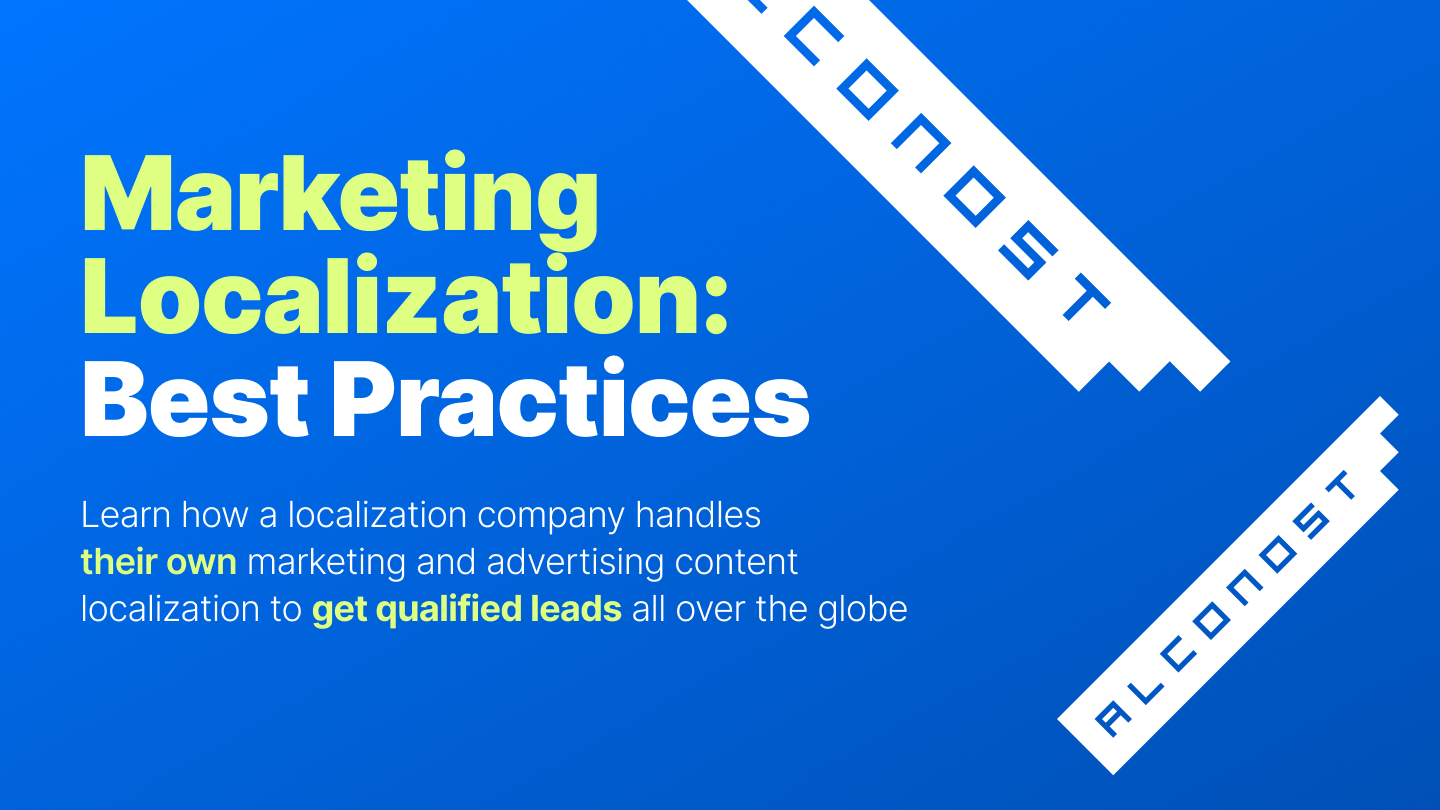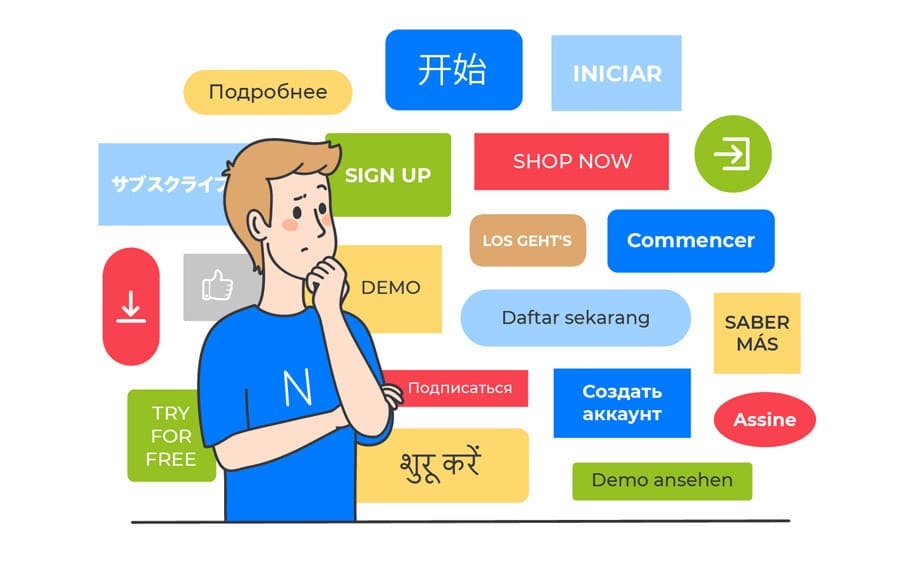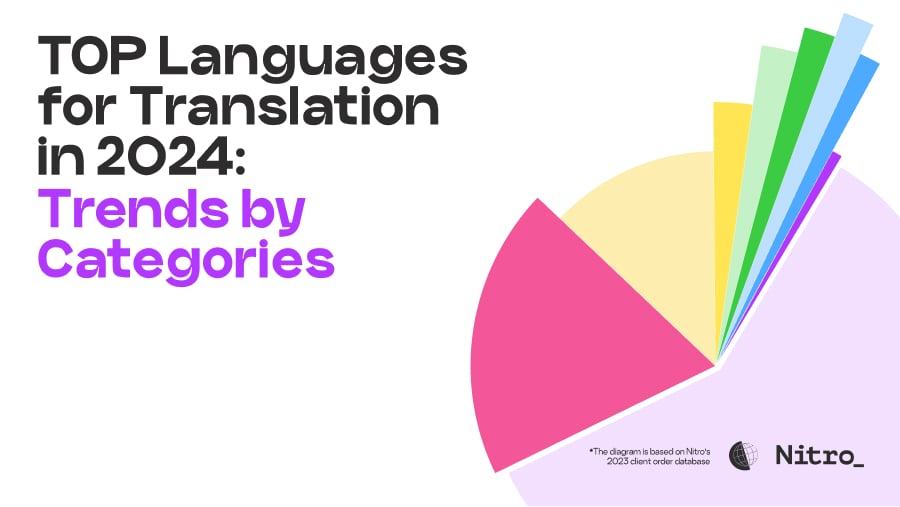In the realm of marketing localization, we don’t just offer services—we’re also our clients. At Alconost, we’ve leveraged our services to localize our marketing materials, navigating the same challenges you may encounter when expanding internationally. Here’s a behind-the-scenes glimpse into our approach and the insights we've gained along the way.
Display Ads: How Localization Increased Our CTR by 386%
We consistently manage multiple display ad campaigns across various countries.

The conclusion is obvious: translated banners perform noticeably better.
Our research of multilingual display ads in several markets, for example, produced some startling findings:
- When compared to their English counterparts, customized banners in France increased the click-through rate (CTR) by an astounding 179%.
- The effect was much more pronounced in Germany, where tailored banners increased the CTR by 386%.
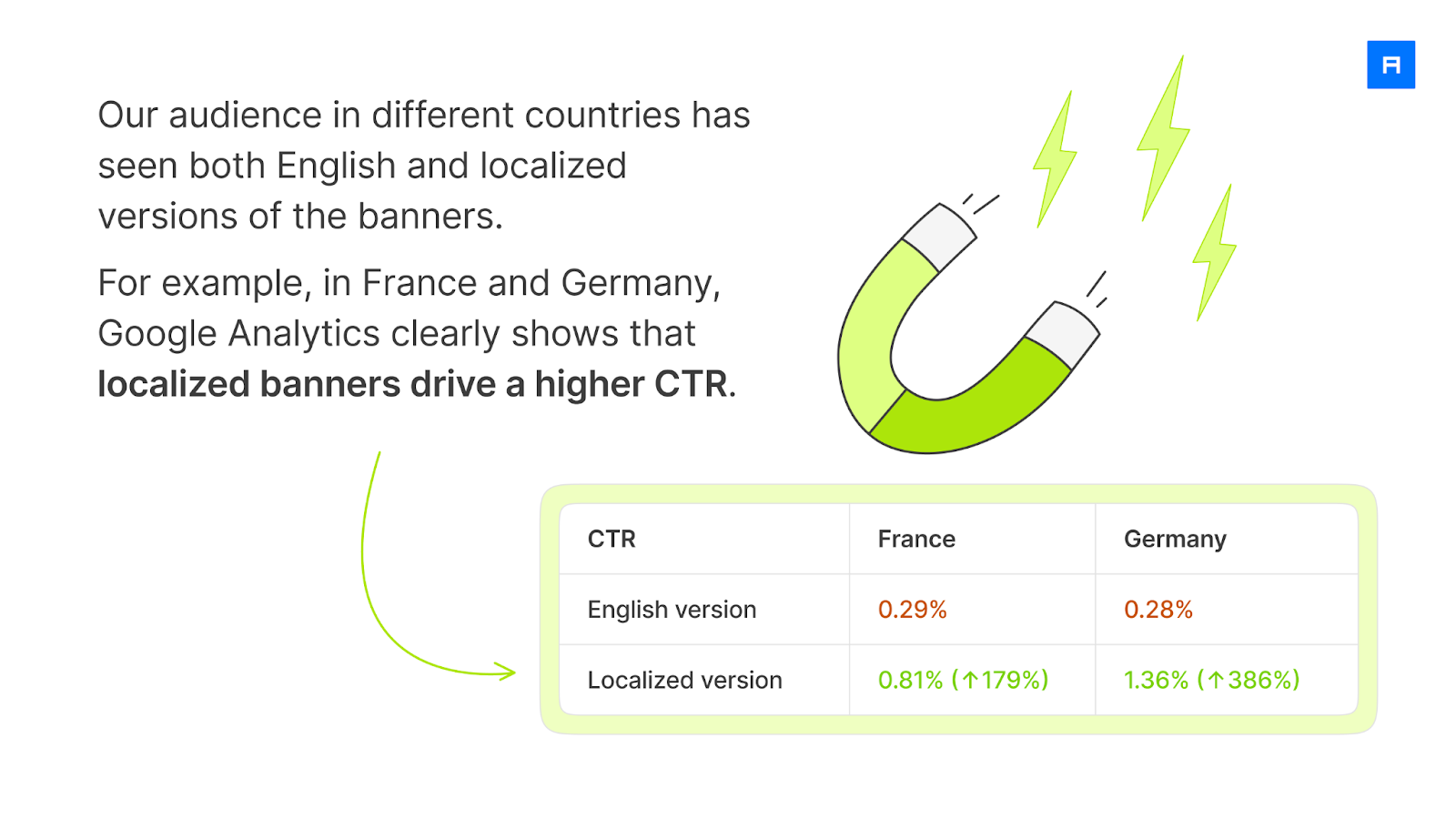
This implies that the emotional resonance of native-language communication cannot be replaced, especially in European nations with high levels of English ability. Because it reflects their culture, values, and interests, people are inherently more engaged with material that feels customized to them. Making even minor cultural adjustments can help you establish a stronger, more meaningful relationship with your audience, gain their trust, and generate a lot more leads.
Website Localization: How About a Huge Drop in Bounce Rates?
Our website has been localized into 15 languages, and we made sure that the translators not only translated the text but also changed the vocabulary, tone, and style to suit each target market.
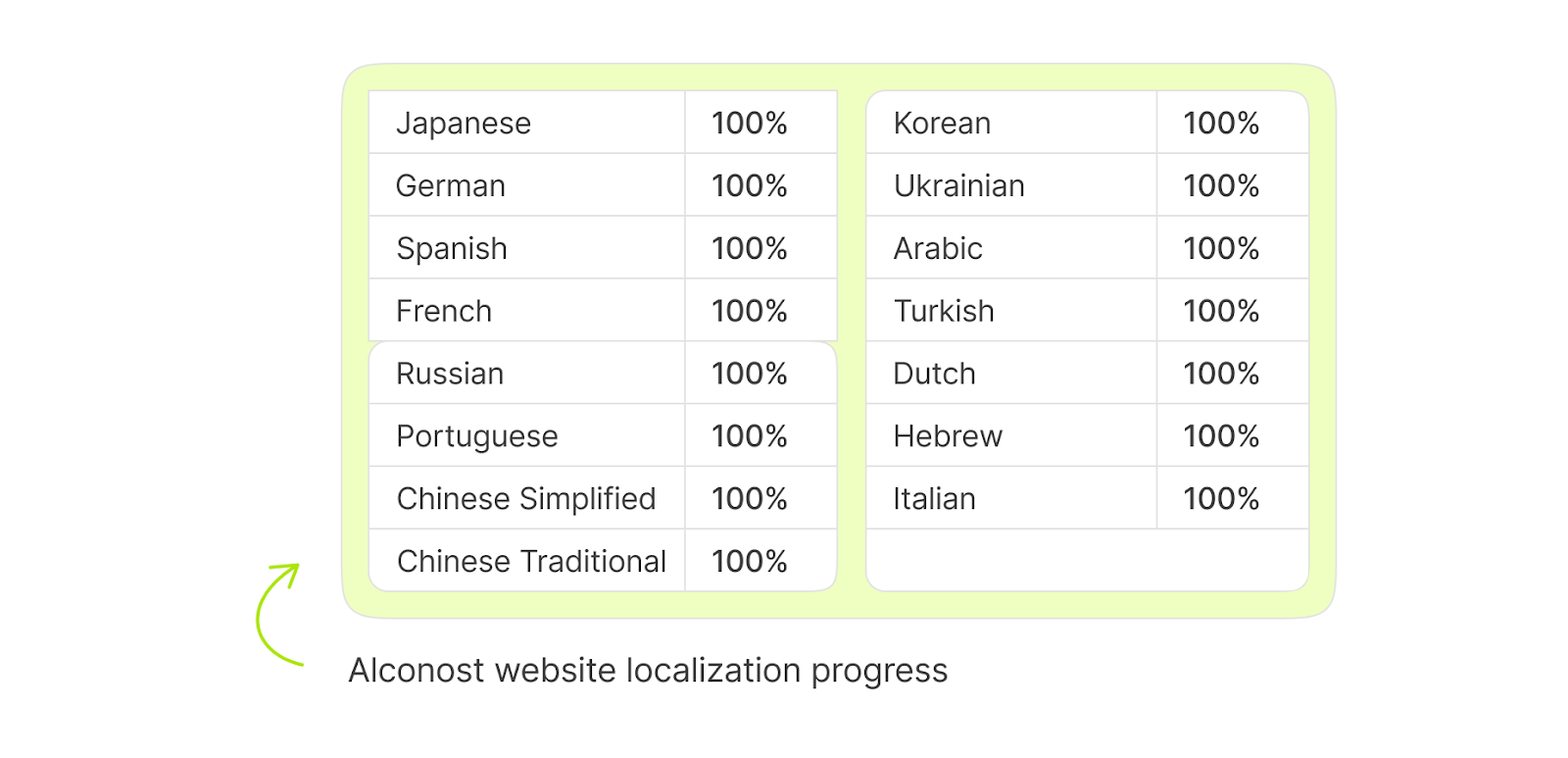
This endeavor was successful. For instance, the bounce rate of Korean consumers who interacted with the localized version of our website decreased by 30%, and key conversion events increased sevenfold.

As you can see, website localization is a potential weapon that may directly impact a company's KPIs, such as greater conversion rates and more visitors, rather than just being a difficult-to-measure brand awareness play.
Our experience has shown that the following are essential for effective website localization:
- Local proofreaders and translators for organic, culturally appropriate language that appeals to your target market.
- A glossary that is updated frequently to guarantee proper, consistent vocabulary across all languages and websites.
- Translation memory can reduce turnaround times, save money, and preserve consistency when translating identical content.
- Competent project managers supervise each procedure stage and guarantee that all modifications, updates, and content revisions are managed effectively.
- Before launching, ensure the localized website meets your brand requirements by doing extensive quality assurance checks to identify any issues.
- Continuous upkeep and updates to maintain the localized content's relevance, freshness, and alignment with market trends.
Blog Post Localization: Boosting Organic Traffic
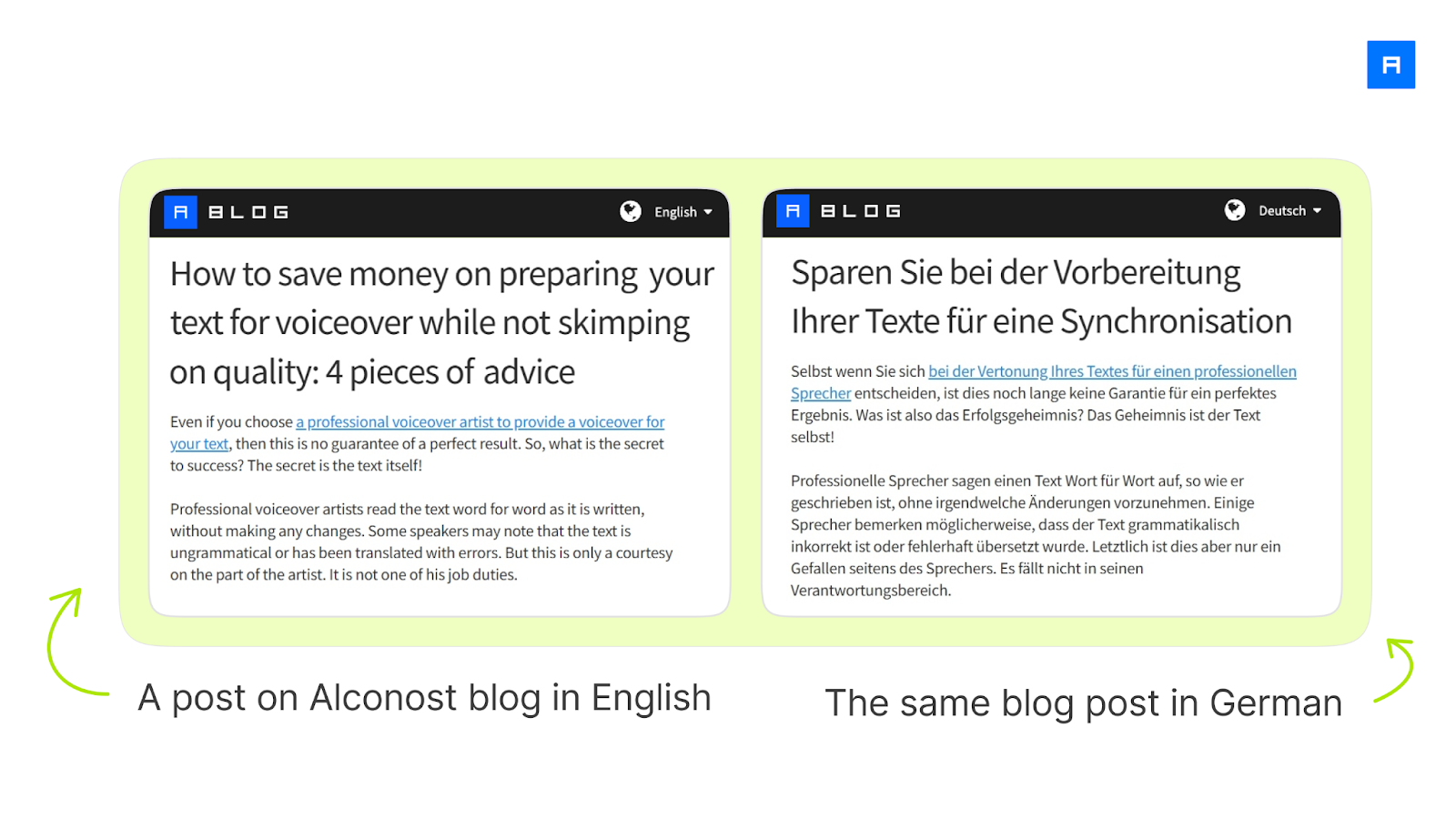
A blog article we localized into German received 80% of the total views for that post in all languages. By making the information culturally relevant and searchable in the target language, we could attract local, relevant organic traffic that English material alone could not.
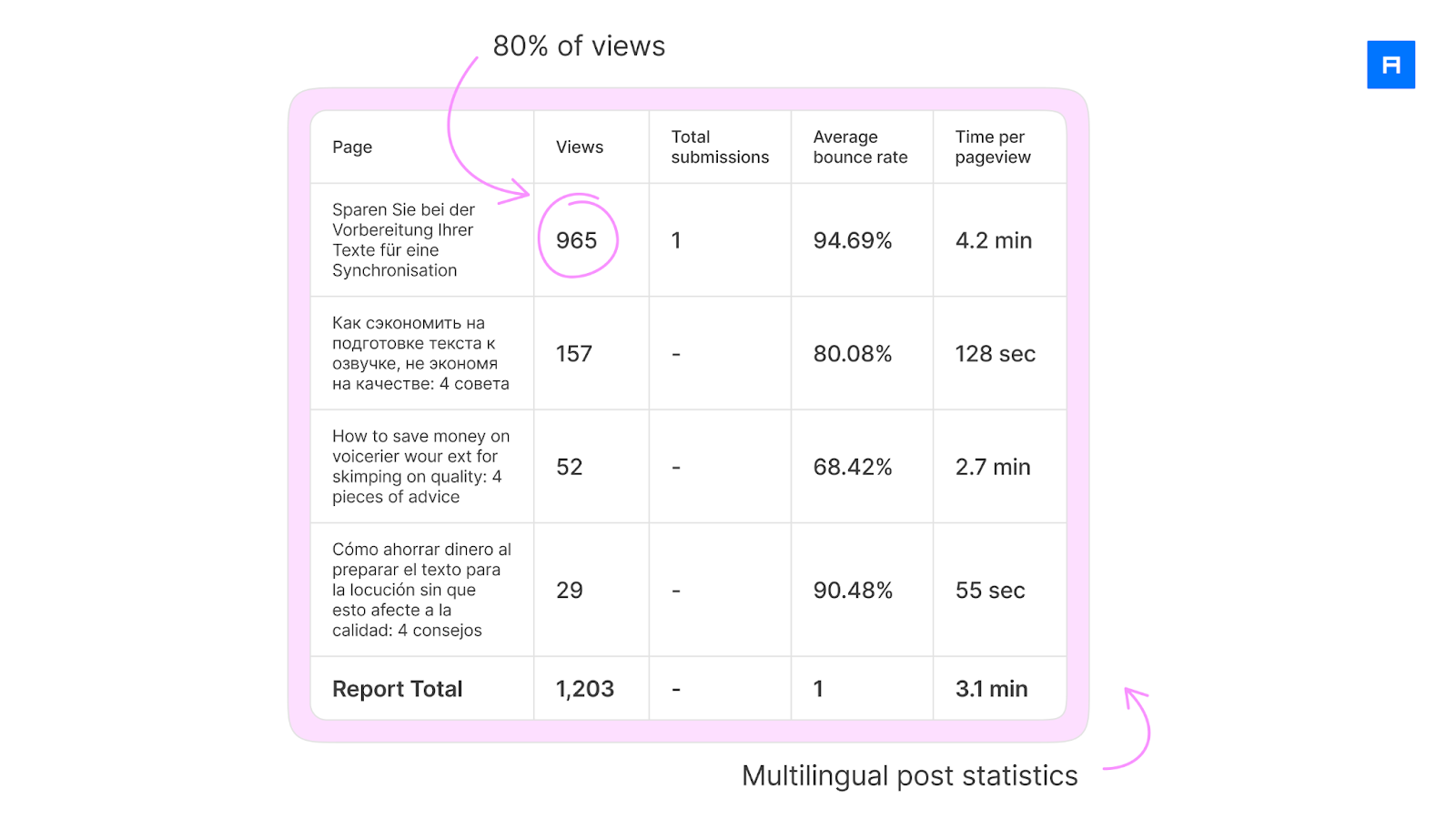
CTA Buttons: Ensuring the Customer Takes the Right Action
Simple, action-oriented text encouraging user interaction is the best practice for localizing call-to-action (CTA) buttons.
However, translating CTAs doesn't always yield the desired outcome. Focus on modifying CTAs to adhere to each target market's established button name patterns rather than translating them.
We modified the Alconost website's call-to-actions (CTAs) to accommodate right-to-left (RTL) text in Arabic and Hebrew.
These versions alter both the language and the button directions; note where the orange button is located.
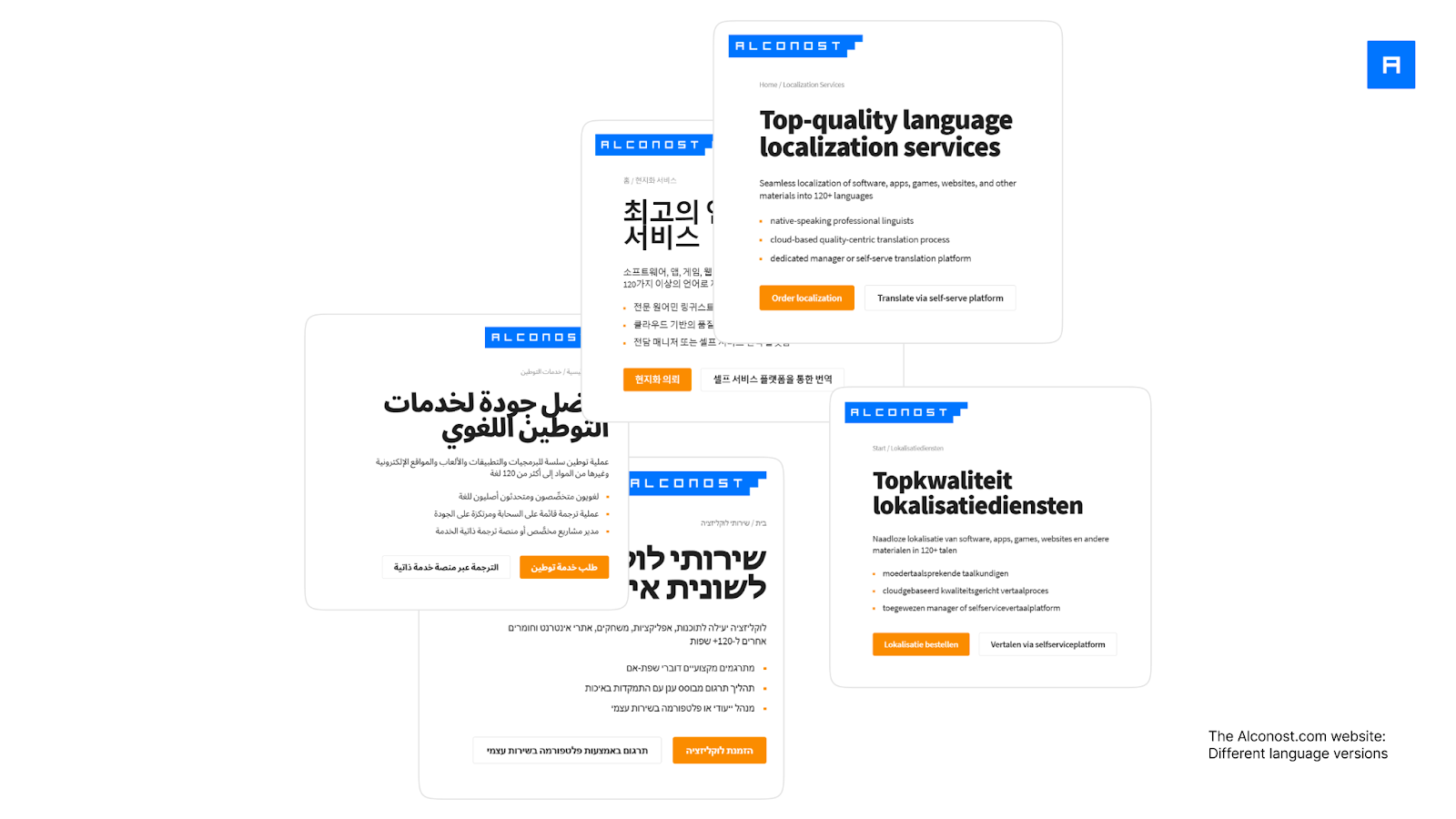
Bonus: Our in-country linguists prepared the top 10 CTAs for you in their original tongue.
Get it now for free! Below, scan the QR code or click here.
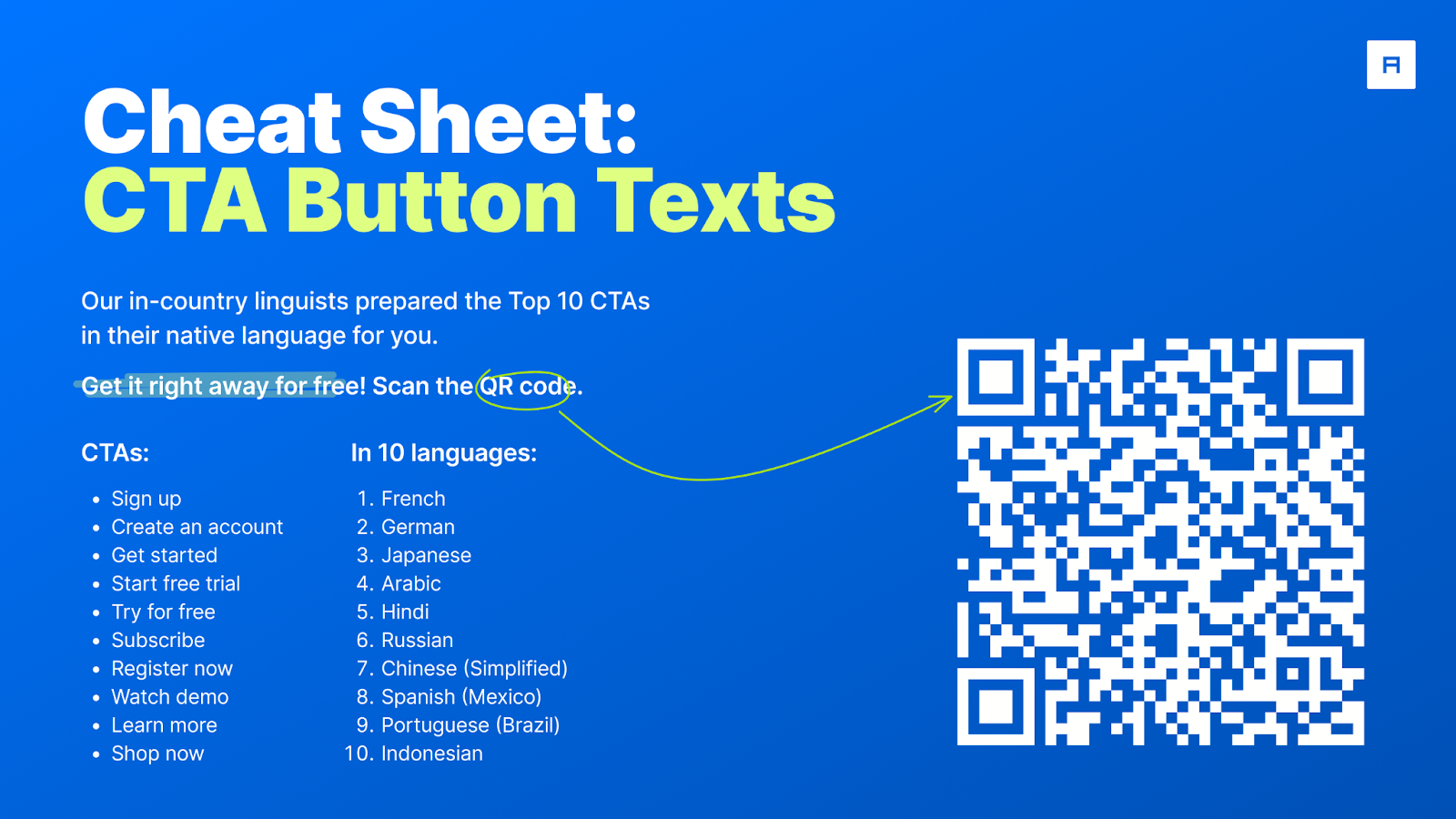
Video Ads
Localization for lessons and video advertisements entails more than merely translating subtitles. We modify the on-screen text, update graphics, and even modify voice-over timing to adhere to stringent time constraints.
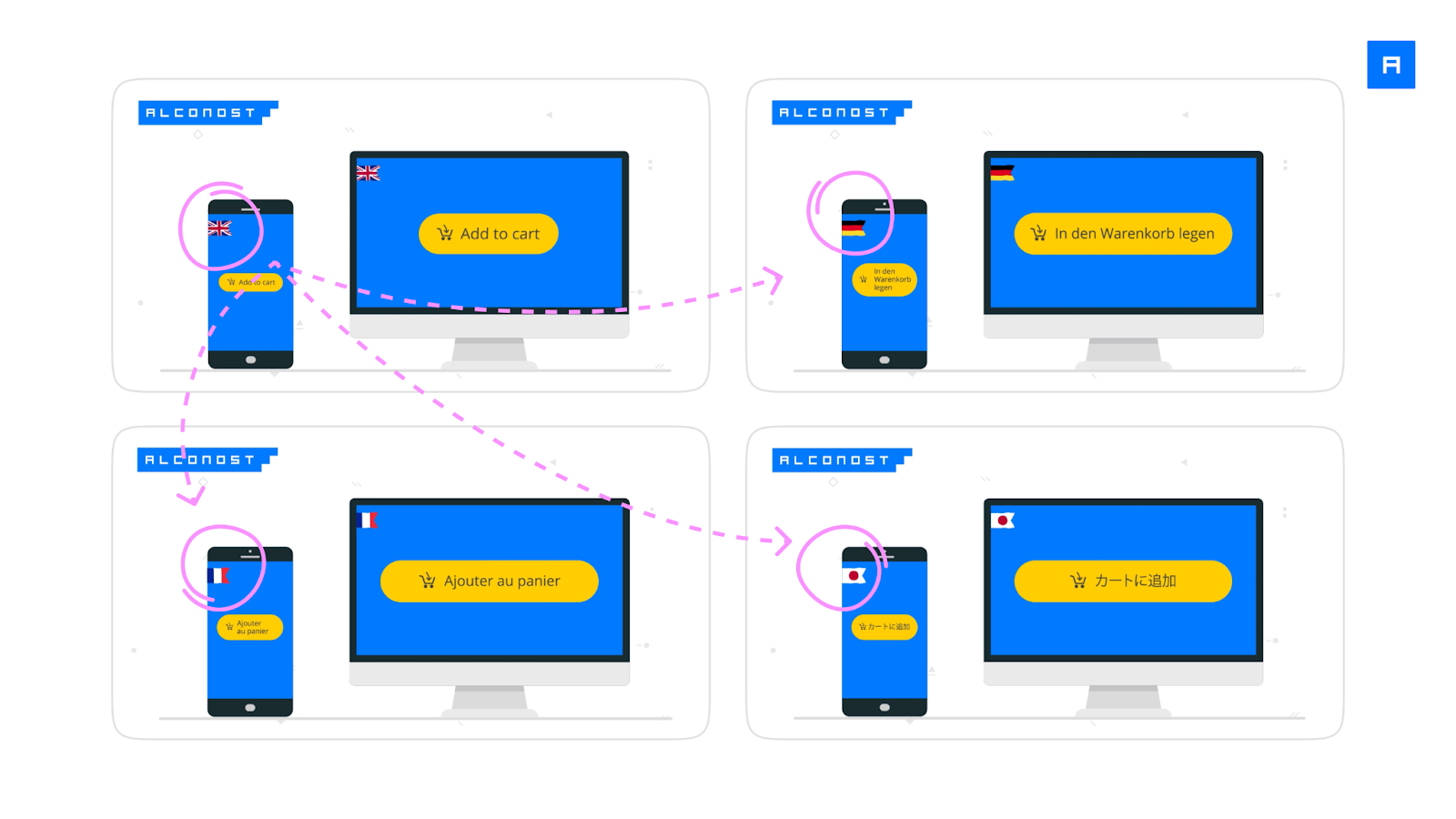
Our linguists, native speakers of their target languages, creatively transcreate the taglines of video ads so that the tone of voice is consistent throughout all language versions.
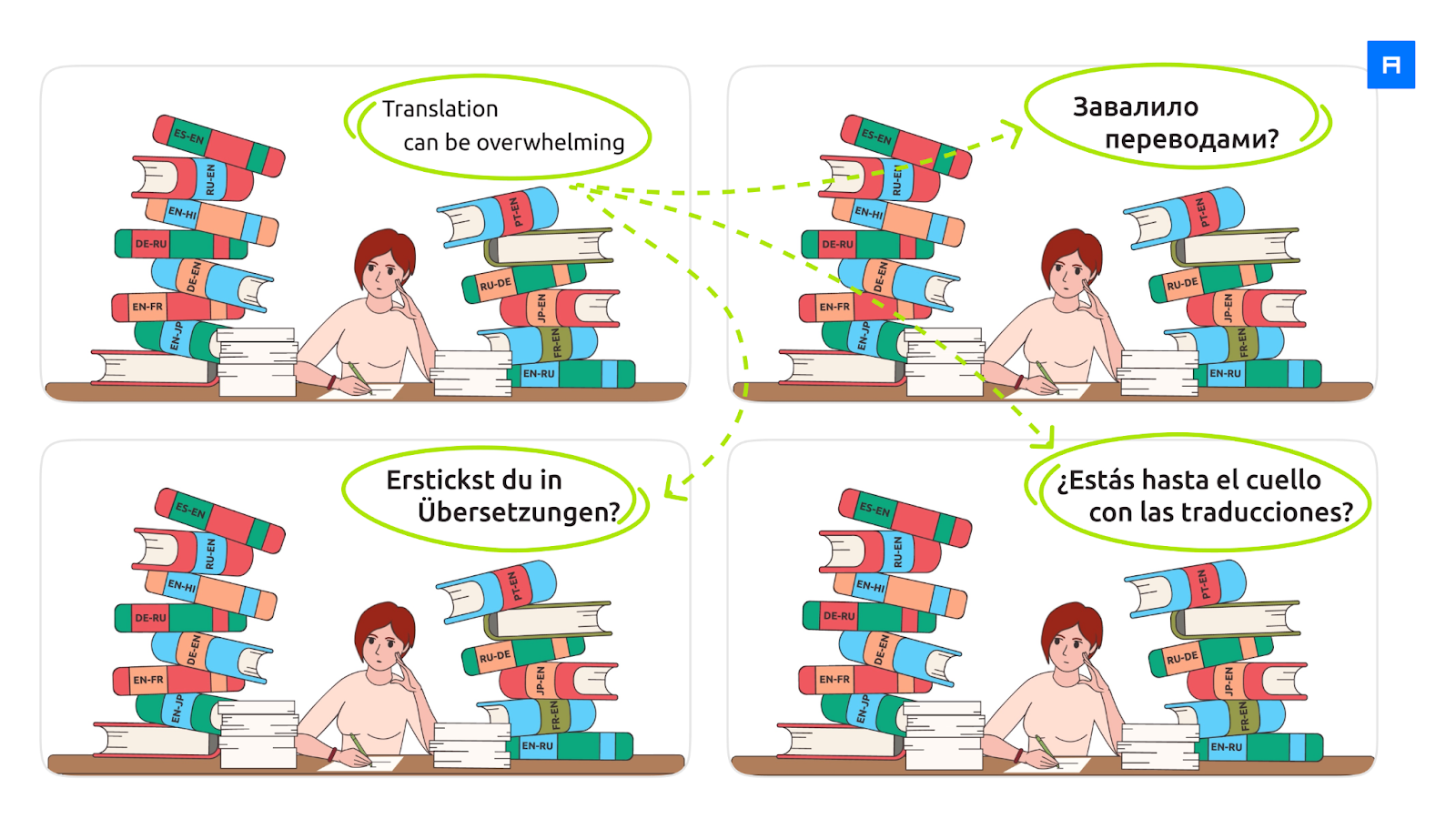
Explainers and Tutorials
Localizing explainer videos requires adding voice-over or subtitles in a new target language. However, altering the language is only the beginning!
Rethinking scenes with animated typography and on-screen text is another aspect of explainer video localization.
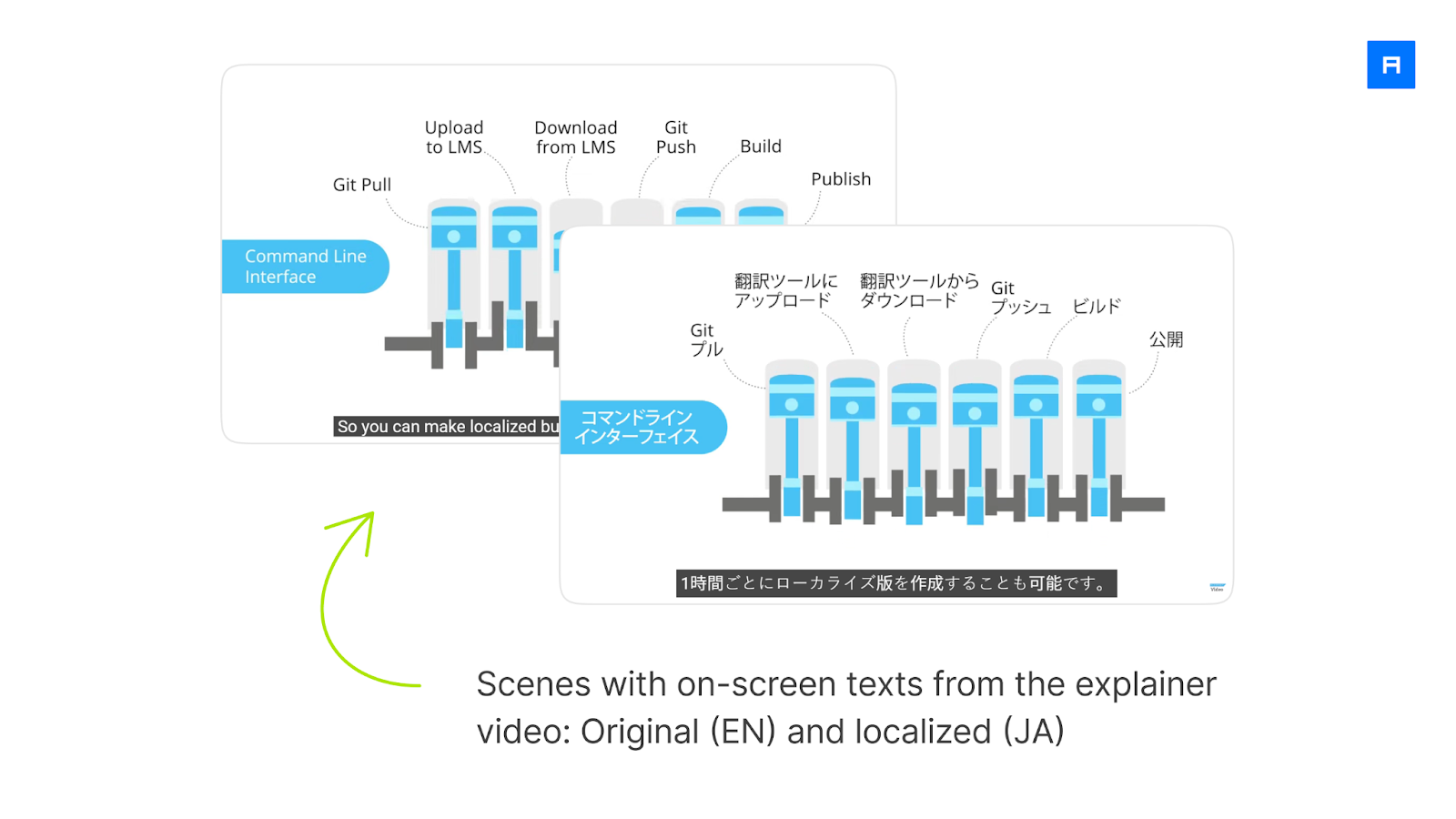
Take a look at how we adapt typography to match the Japanese language in this explainer video: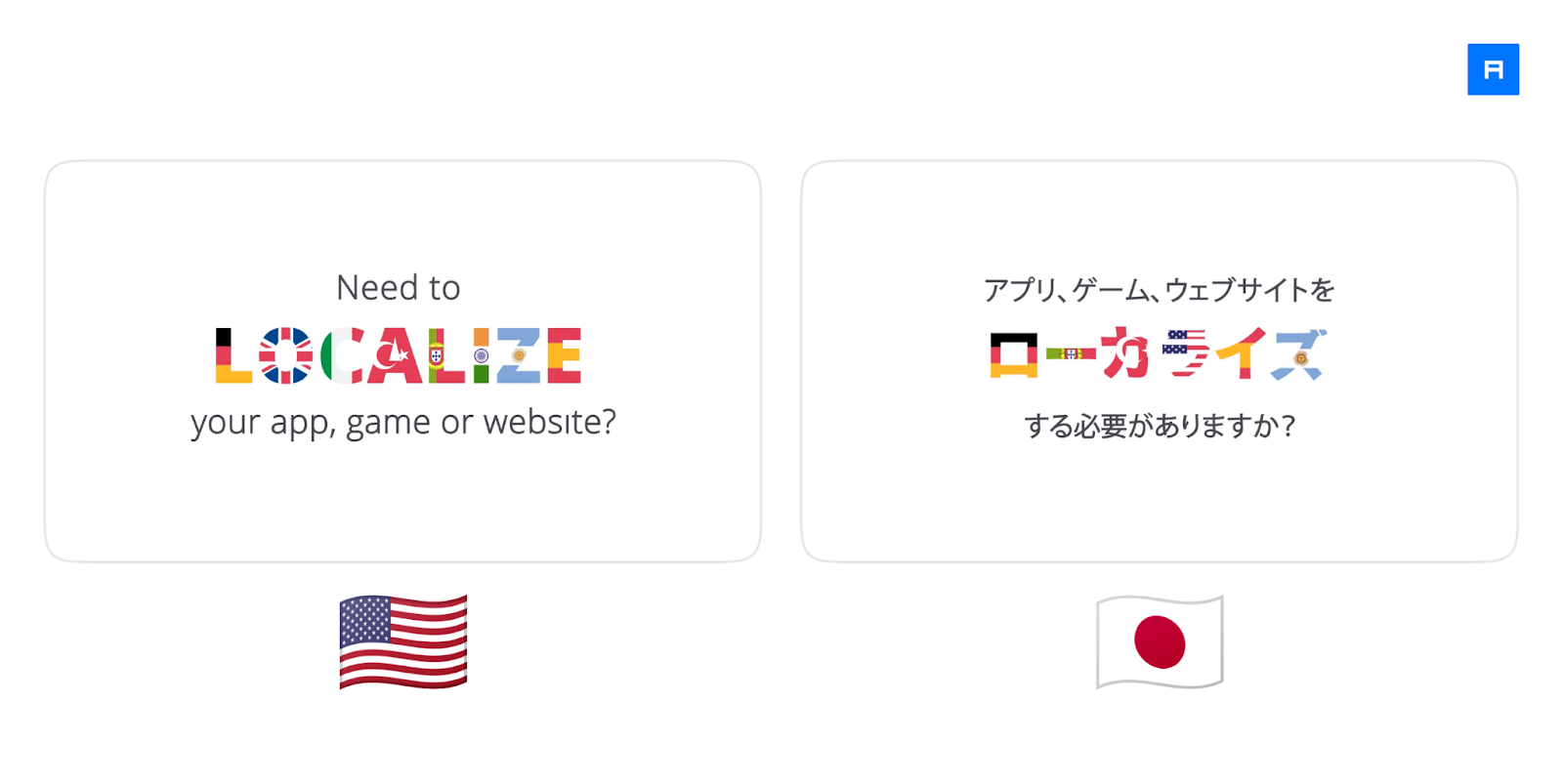
And don’t forget to make video covers that are both informative and culture-relevant.
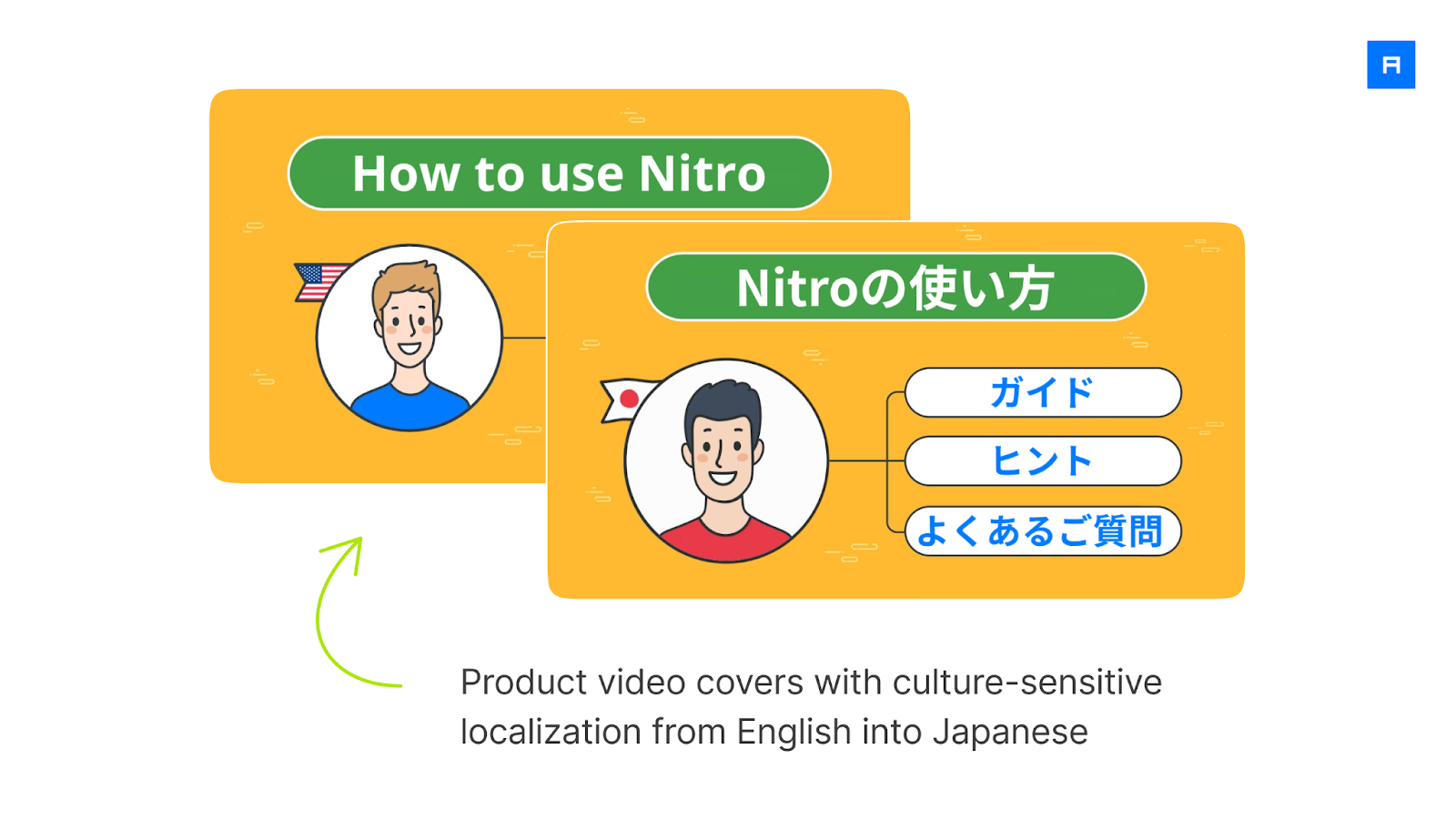
Think about displaying the appropriate language version of the user interface in each regional adaptation in the tutorial and product demo films.
It facilitates comprehension of the video and indicates to visitors that your product is available in their native tongue. The latter is in and of itself a competitive advantage!
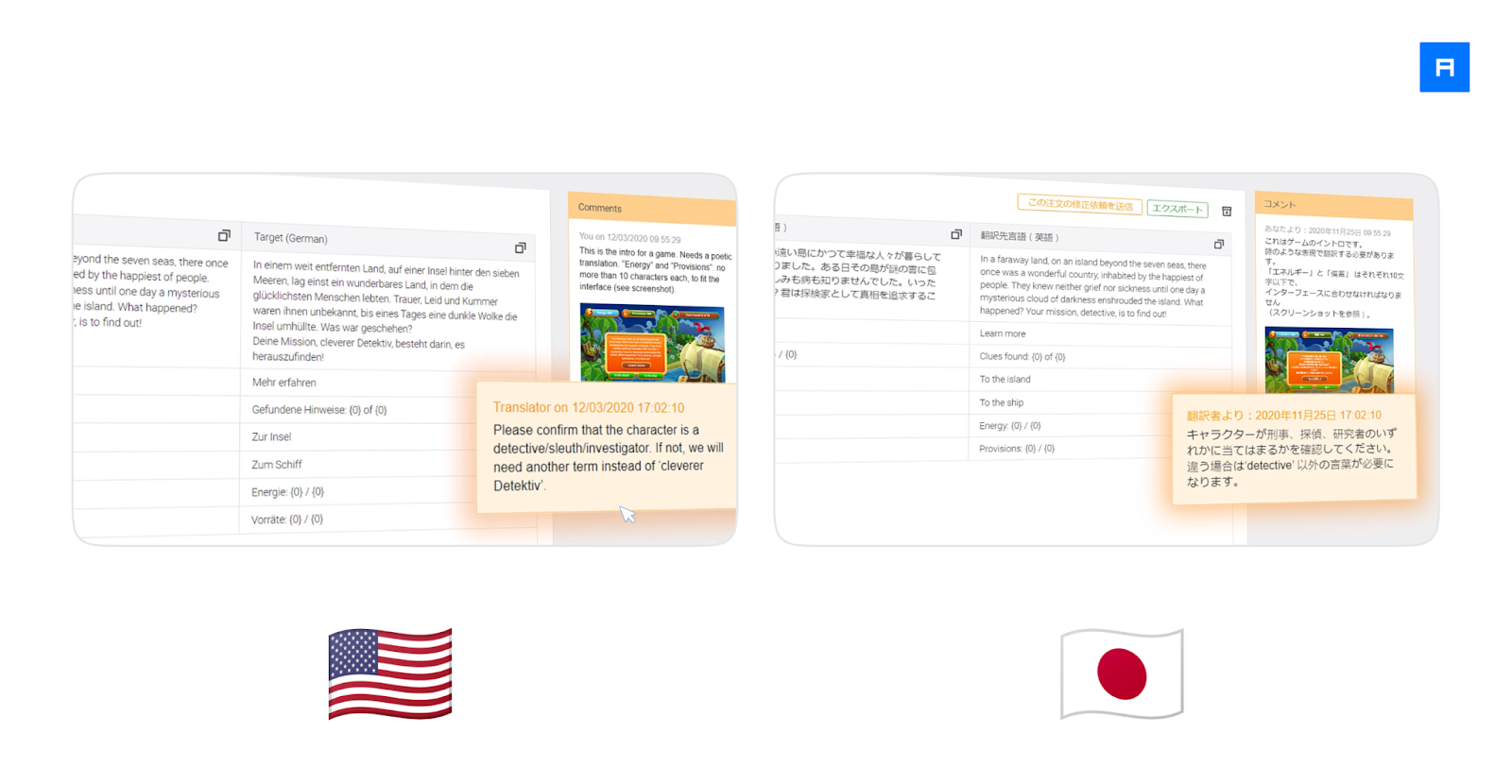
To gain a new market, however, is content translation sufficient?
Unfortunately, no.
Include these items on your checklist if you want to be successful locally online:
- Localize your website's semantic core or its searchable thematic keywords. Research search demand in the target nation and modify your keyword strategy.
- To increase organic reach, localize meta tags for SEO.
- Change your content strategy, including topics and formats, to ensure that the issues you write about align with regional trends and your audience's context.
Why Transcreation Matters for Truly Reaching Your Target Audience
The lesson is that localization isn't always simple. As we got ready to enter the Japanese market, we found that the term "localization" was typically used for maps and navigation systems, which is not what we provide. Instead, we employed "translation," which was more in line with the local understanding of our services. We might have wasted money attracting unrelated leads if we hadn't made this change.
- You must conduct a study to identify problems such as these.
- Transcreation services are necessary to address problems such as these.
A Few Takeaways for Your Next Project
To successfully enter new markets, we advise doing the following:
- Collaborate with indigenous linguists who are aware of regional quirks.
- Maintain terminology consistency by updating glossaries regularly.
- When modifying images and messaging, take cultural standards into account.
- To gauge the impact of localized material in the real world, test it out and be prepared to make adjustments.
Although localization requires investment, the outcomes are clear. Better engagement, more conversions, and a more robust worldwide presence have all resulted for us. Whether you're starting small or have big plans, taking the time to localize carefully can make all the difference.
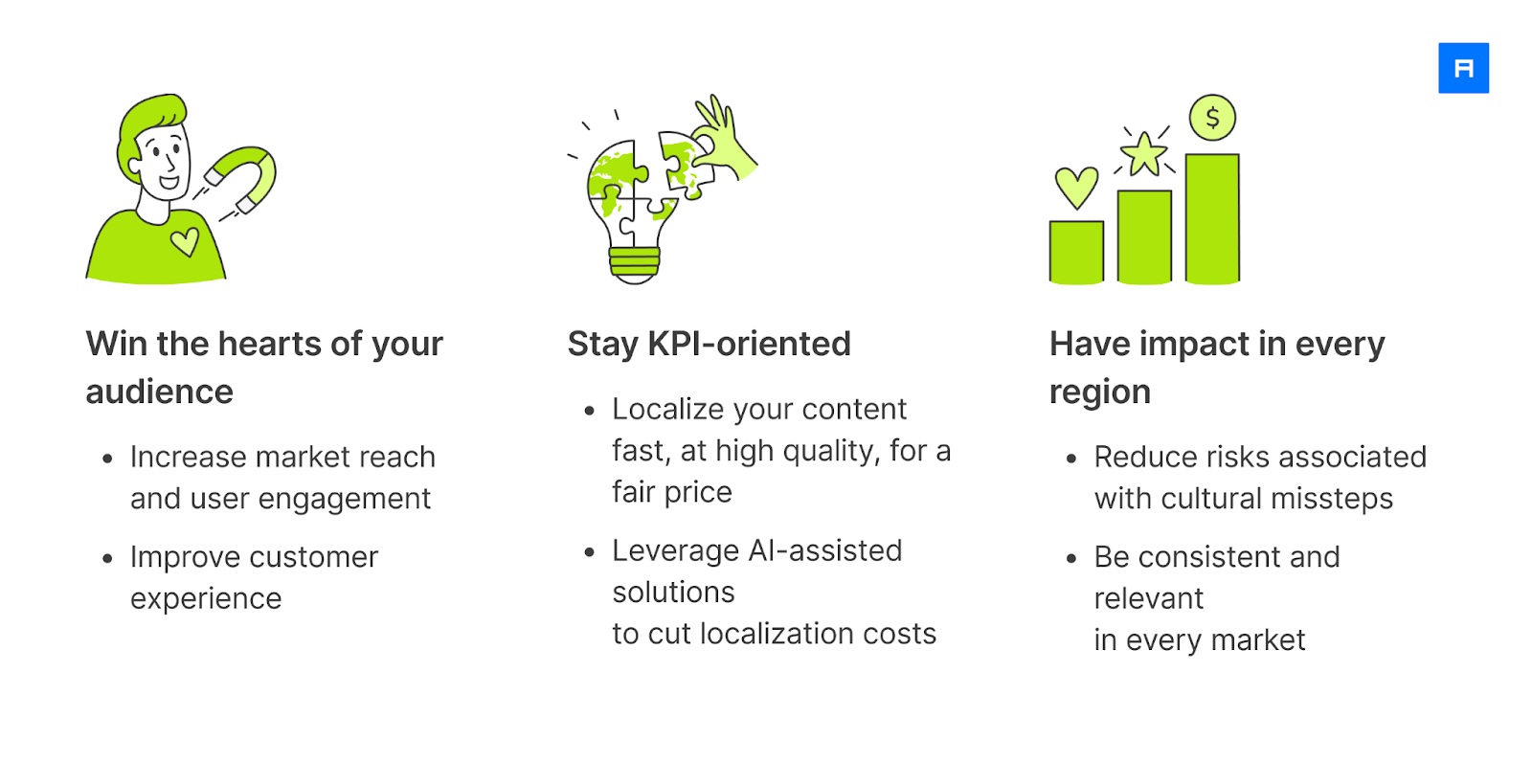
Ready to Localize?
Since we have been in your position, we understand what it takes to be successful in new markets. If you’d like to learn more about how localization can work for your business, book a free consultation with our team. Let’s discuss how you can turn your global vision into a reality.


